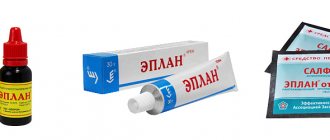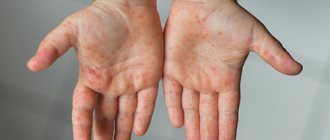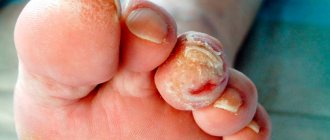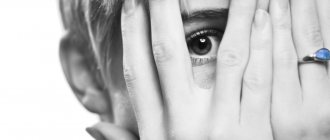Grade I
The burn affects the superficial layers of the skin. The damage is accompanied by redness, slight swelling, severe or moderate pain, and a local increase in temperature. There may also be discomfort when moving. For example, if your hand or fingers are injured, the pain intensifies when you try to move them or when you touch the burned area. With simple treatment, first-degree burns disappear without traces within 2–3 days in adults and 3–5 days in children.
Grade II
The deeper layers of the skin are affected and blisters filled with fluid form. Inflammation occurs around them, and when the bubble is removed, weeping wounds of varying sizes may appear in its place. Grade II injuries are accompanied by swelling and redness. With such a burn, a person experiences burning pain, which for some time can interfere with sleep and leading a normal lifestyle. As the blister heals, it falls off and a crust forms at the site of the wound.
Grade III A
The skin is damaged very deeply; a so-called scab forms at the burn site - a dense gray-brown crust. The painful sensation before its formation is acute, since the damage affects the layers of skin with nerve endings. Sensitivity is reduced, regeneration is very slow, and skin grafting is often required. The risk of developing burn disease increases.
Grade III B
Irreversible damage affects not only the skin, but also the subcutaneous tissue.
Grade IV
An extremely severe burn with charring of the skin and underlying tissues, muscles and bones are damaged.
The degree of burn cannot be the only guideline when providing first aid and planning further actions. For example, with grade I injuries that seem mild at first glance, but with a large area of damage, a burn disease may develop, which cannot be treated independently. This condition is characterized by disruption of the activity of internal organs and all body systems. For severe and extensive burns, treatment and care should be carried out only under medical supervision.
Remedies for burns sold in pharmacies
Today, you can purchase anti-burn products of various types and forms in the pharmacy. They differ somewhat in their characteristics.
Aerosol
Aerosols are effective in providing first aid immediately after a burn. We are talking about grade 1 and 2 lesions if there are no open wounds on the surface of the skin. In this case, using an aerosol will help relieve pain symptoms; the product will do an excellent job of swelling and redness. And its convenient form allows you to apply it without touching the affected area of the skin: the spray or foam is sprayed remotely.
The principle of operation is very simple: the aerosol is shaken and sprayed from a 15-centimeter distance onto the burn, while the bottle must be held vertically.
There are light aerosols and aerosols with foaming components for grade 2 damage.
Burn gel
Gels for burns have a light texture and non-greasy composition; they are quickly absorbed, relieve primary symptoms after skin damage, and additionally soothe and moisturize. Unfortunately, gels are not suitable for treating deep skin burns - only mild and not extensive lesions of the 1st, or less often 2nd degree.
Unfortunately, gels are not suitable for the treatment of deep skin injuries - only mild and non-extensive lesions of 1st, less often 2nd degree.
Ointment for burns
Thicker and more viscous than gel. It is advisable to use ointments for 1st and 2nd degree burns and at all stages of healing of more serious burns. Doctors also recommend applying compresses to the damaged area of skin with anti-burn ointments - they often contain components that accelerate regeneration.
Burn cream
The composition of creams that may be indicated after burns includes special components:
- Reducing inflammation (for example, violet and string extracts),
- Having an antimicrobial and disinfecting effect (for example, walnut extract, iodine),
- Accelerating the process of skin cell regeneration (for example, vitamin B5).
Burn creams not only promote the healing of damaged skin, but also have a moisturizing and nourishing effect. One of the advantages of creams is that their use has a positive effect on the condition of the skin as a whole.
Anti-burn wipes and dressings
Refers to first aid equipment. Their surface is impregnated with a special composition that allows you to relieve the first painful symptoms.
The main advantage of these products is that the napkins are convenient to use in “field” conditions. You can always take them with you on a hike, and if someone accidentally gets burned at the fire, you can help the victim.
Anti-burn dressings are applied to the affected area while waiting for the ambulance to arrive.
Modern anti-burn drugs: a review of effective agents
There are a variety of anti-burn products on the market: sprays, gels, ointments and creams that have an anti-inflammatory, disinfecting, healing and soothing effect that promotes healing of the affected area. Some drugs are effective in themselves, while others need to be used as adjuncts.
Panthenol
Panthenol is an anti-burn drug, used to treat burns of varying severity, available in the form of a spray, gel, ointment, cream and aerosol.
The main active ingredient is dexpanthenol, which accelerates the regeneration of skin cells. Panthenol spray is used immediately after a sun or thermal burn - it has an anti-inflammatory effect. At the treatment stage, it is better to give preference to Panthenol ointment, gel or cream.
Olazol
Olazol is a remedy that is effective for thermal burns. Available in aerosol form. Due to the components included in the drug (chloramphenicol, anesthesin, sea buckthorn oil, anhydrous lanolin, etc.), Olazol has an analgesic, anti-inflammatory and antibacterial effect.
A very effective remedy for thermal damage of 1st and 2nd degree.
Furaplast
A drug for external use, which is intended for the treatment of burn wounds. Due to furatsilin, which is part of the drug, Furaplast has an antiseptic effect. The drug is applied to the burn site in an even thin layer to form a special protective film. The film lasts for several days; if it is damaged, Furaplast must be reapplied.
Important: Furaplast will not be able to help if inflammatory processes or suppuration have begun in the damaged area of the skin.
Another active ingredient, furatsilin, has an antiseptic effect.
Please note: it is not recommended to use Furaplast if inflammation and suppuration have begun at the burn site - the film will not allow the skin to breathe.
Solcoseryl
Solcoseryl ointment and gel is an effective remedy for burns of 1st, 2nd and even minor injuries of 3rd degree. The main active ingredient is cattle blood extract, while the drug is purified from protein. This composition helps to increase metabolism in skin cells, resulting in rapid healing.
The gel and ointment are applied directly to the surface after preliminary cleansing of the skin using a disinfectant solution.
Bepanten
Bepanten has an analgesic effect. Due to dexpanthenol, which is included in its composition, Bepanten is able to accelerate the healing process of wounds after burns. Bepanten can also be used as a first aid remedy for burns. The drug is commercially available in the form of ointment and cream. In addition, Bepanten is suitable as first aid for 1st and 2nd degree burns: the ointment has an analgesic effect.
La Cree
La-Cri cream for sensitive skin was created specifically to relieve skin irritations. Including those occurring after minor burns.
This remedy includes extracts of licorice, violet, string and bisabolol, which reduce inflammation. Walnut extract has an antimicrobial effect, while panthenol and avocado oil soften the skin and stimulate its regeneration.
Due to the absence of dyes and fragrances, La-Cri ointment can be used even by newborns. It will become a reliable assistant after burns in children and adults - see for yourself!
Treatment of burns
General treatment of household burns is aimed at:
- Protection against infection;
- Maintaining normal regeneration;
- Eliminate discomfort.
Local treatment of minor (1st degree) burns can be done at home using good over-the-counter topical medications.
When treating second degree thermal burns when blisters appear, the following methods are used:
- Open With the open method, thanks to the constant flow of fresh air, the burned skin dries naturally and heals easily. The disadvantage of this method is a higher risk of infection. Additionally, touching, rubbing, or any other mechanical force on the damaged area can slow down recovery and cause discomfort.
- Closed In the closed method, moisture-absorbing sterile dressings with a healing agent are applied to the burn site, for example when treating blisters. They absorb fluid discharged from wounds and protect against secondary injury and infections. The bandage must be changed regularly. The closed method of treating burns is often used when the skin on a moving part of the body or in contact with clothing is damaged. The disadvantages of the closed method are possible painful dressings and relatively high consumption of materials7.
- Mixed Open and closed methods can be used simultaneously, alternating throughout the entire treatment period. The open method is chosen when the victim can be at rest and the burn wound will not be subject to mechanical stress (touching, friction of clothing, stretching). Applying a bandage will protect the wound from infection and unnecessary irritation, for example, if a person needs to actively move.
To treat inflammation during a burn, which can occur as a complication, antibacterial drugs and additional treatment of the burned area of skin are sometimes prescribed. At the healing stage, you need to reduce the mechanical impact on the affected area - this way recovery will take less time, and the wound will heal without leaving any traces. During this period, it is advisable to use special products that support regeneration and have an antiseptic effect, for example, Bepanten Plus cream.
Auxiliary products for burns
Rescuer
Suitable as an additional product. This domestically produced ointment is known for its natural composition and universal healing properties. Most likely, you will find a Rescuer in your first aid kit - use it when treating burns for their quick healing.
Actovegin
It is an ointment that effectively copes with sunburn. In some cases, it can be used to prevent burns after radiation therapy sessions.
Chlorhexidine solution
Suitable for disinfecting burn surfaces. You can apply a bandage soaked in Chlorexidine to the affected area or irrigate the burn several times a day with a 0.5% solution.
What not to do for thermal and sunburn
04.10.2021
A burn can easily be considered the most common household injury. You can alleviate the fate of the victim in various ways. Some people are trying to use very dubious procedures. This makes the person suffer even more. Therefore, everyone should clearly know what not to do in case of burns.
Briefly about burns
A burn is an injury caused by a thermal factor. This type of damage can come from a variety of sources. Depending on the agent, the following types of burns are distinguished:
- Chemical species
- Radiation burn
- Thermal view
- Sunburn
Burns damage tissue to varying degrees:
1. Redness of damaged skin. Such a burn, in addition to hyperemia, is accompanied by slight swelling. Only the epidermis is damaged.
2. Damage to deeper layers. The dermis is already involved in the process. A blister appears at the site of the burn. The hollow formation contains a transparent liquid with a yellow tint.
3. Tissues are damaged to a sufficiently great depth. The condition is characterized by the involvement of nerve endings in the process. For this reason, severe pain occurs.
4. The skin is charred with loss of general sensitivity. The process reaches the muscles and sometimes bones .
Important! Self-help can only be provided for first and second degree burns. An indispensable condition for this is the small size of the affected area. Other burns should be treated only in a hospital setting. A serious complication of such burns is the development of painful shock.
List of prohibitions when treating burns
If a person is burned, he needs to be helped quickly and correctly. This should be done by the one who is nearby. The future fate of a person may depend on the actions taken. It is always necessary to remember what not to do in case of burns.
- Do not apply oil or fermented milk products to the surface of the burn . For some reason, it is generally accepted that the burn site should be immediately lubricated with olive or regular sunflower oil. But such a procedure will not make the patient feel better. Moreover, an oil film is created on the surface, which prevents normal air circulation. As a result, the damaged surface will not cool. A so-called greenhouse effect is created around the burn. For this reason, you should not smear the burn with fermented milk products (kefir, fermented baked milk).
- Do not treat with products containing alcohol. Some people treat the burn with alcohol to prevent infection. But this cannot be done. Alcohol will increase the pain and dry out the burn surface excessively. This is especially true for burns caused by hot chemical solutions.
- You should not apply lotions with herbal decoctions to the surface of the burn. There is no reliable information about the benefits of such products, so there is no need to take risks.
- Do not apply ice to a burn People try to cool the surface of a burn by applying ice to it. This is a fairly common mistake. The surface needs to be cooled, but not with ice. It inhibits blood circulation, which means that the burn will heal slowly.
- Do not use antibacterial ointments Cream or ointment should never be used to treat fresh wounds. They impair air circulation. If the burn is immediately treated with ointment, it will take a long time to heal. Weeping areas may occur.
- The use of urine is prohibited. Those who revere urine therapy consider urine to be a healing liquid. But it’s better to forget about this event forever. Urine may contain bacterial microflora, which, if it enters a wound, will cause the occurrence of an infectious inflammatory process . Urine is acidic and can increase pain.
- It is forbidden to puncture blisters. It is clear that you can simply get infected.
- Rejected tissue cannot be torn off. First of all, it is necessary to eliminate the source that led to the injury. It is necessary to remove wet clothes if someone has poured boiling water on themselves. If the thermal factor affects the hand, metal objects (ring, bracelet) should be removed from it. This is done in order to avoid additional injury.
- Avoid any contact with the burn. Damaged skin should be handled carefully. To prevent infection, do not touch the burn with your hands.
Published in Articles without category Premium Clinic
Home remedy for burns
If you don’t have an anti-burn medication on hand, then home remedies for burns can come to the rescue.
The speed of first aid plays an important role in how serious the consequences will be. The best remedy for skin burns is to interrupt contact with the hot surface as soon as possible and cool the damaged area of the skin.
Cooling the skin with water for a burn
If there are no open wounds, keep the affected area under cold water for at least 10 minutes. Cold will not only help reduce painful symptoms, but will also prevent the burn from spreading further. In case of chemical burns, it is also necessary to quickly wash off or neutralize the substance.
If there are no suitable medications in your home medicine cabinet, turn to proven “grandmother’s” methods.
Folk remedies for burns
- Toothpaste containing menthol can be applied to the site of a minor burn.
It will help relieve pain, protect against germs, and relieve swelling. And if you leave it on the skin in a thin layer, the paste will not allow moisture to evaporate from the skin tissue, which means the surface of the skin will not dry out. A small burn can even be cured with a few applications of toothpaste. - If you have an aloe flower growing at home, you can use its leaves to treat a burn.
To do this, you will need to thoroughly wash and cut one sheet lengthwise and bandage it to the damaged skin. Or you can make a paste from the leaf and even squeeze out the juice for a compress - whatever you have the strength to do. - You can use tea for a compress.
You need to strongly brew black or green tea, wet the bandages with it and wrap the burned area. Thanks to tannins, strong tea helps improve blood circulation, which has a positive effect on healing abilities. - Grated potatoes
relieve swelling and soothe pain. You can also apply a cabbage leaf or a compress with cabbage juice to the burn site.
When choosing a suitable remedy, you should remember that folk recipes are suitable for minor burns, as well as during the healing stage of more serious injuries.
Be sure to consult a doctor in the following cases:
- A burn of greater than 2nd degree of severity affecting a large area of the body.
- A child, an elderly person or a person with serious illnesses was injured.
- It was not possible to relieve the burn symptoms on my own.
- The victim feels unwell after the burn: feels dizzy, nausea, weakness, difficulty breathing, and irregular heartbeat.
- The burned area is the face, neck, groin area.
We also recommend that you consult a specialist before purchasing burn remedies that contain antibiotics, taking antihistamines and serious painkillers. In everyday life, we most often encounter thermal, chemical and radiation burns. With thermal damage, tissue damage occurs due to exposure to high temperatures. Chemical burns can be caused by cleaning products. And the well-known sunburn is a radiation burn, not a thermal burn.
According to the depth of damage, burns are divided into 4 degrees. Most often in everyday life we encounter the first two. In the first degree, the skin turns red, hurts, and then a slight swelling appears. But everything goes away in a few days. With a second degree burn, in addition to pain and swelling, transparent blisters appear. The burn goes away completely within a few weeks.
Depending on the depth of the injury, a remedy for burns is selected. Treatment for a first-degree thermal burn can be done at home, but if you have a large second-degree burn or more severe injuries, you should see a doctor. For burns in children, you should consult a doctor in case of extensive first-degree burns.
The severity of the consequences and the duration of treatment largely depend on how and how quickly first aid was provided. The very first step in case of a thermal burn (a burn resulting from contact with direct fire, a hot surface or liquid, etc.) is to interrupt contact with the source of the burn (hot surface, chemical, etc.). If the burn is chemical, then the first priority is to neutralize the chemical. If you have a sunburn, get out of the sun as soon as possible.
If there are bleeding wounds, you should immediately call an ambulance or go to the emergency room. If there is no wound, then the burn site must be kept under cold running water for 10-12 minutes.
A clean gauze bandage should be applied to the affected area of skin to avoid infection. The most dangerous burns are for children's delicate and thin skin. Even with a minor burn, it is necessary to call a doctor for your child.
To summarize: before the doctors arrive, you need to cool the wound, apply a clean bandage and take pain medication (if necessary). It is recommended to use anti-burn medications and folk remedies for burns of the 2nd degree and above after the affected area of skin has been examined by a specialist.
Causes of burns
A burn can occur due to exposure to:
- fire;
- hot liquid or steam;
- hot metal, glass or other objects;
- electric current;
- radiation (x-rays or radiation therapy);
- ultraviolet radiation (sun or solarium);
- active chemicals.
It is worth noting that the causes of burns may be different, but all types of such injuries are classified depending on the degree of damage caused and symptoms:
- First degree. This burn affects only the outer layer of the skin. The injury is characterized by redness, swelling and pain. The victim is given first aid and a short course of treatment is prescribed.
- Second degree. This burn leads to damage not only to the epidermis, but also to the underlying layer - the dermis. The lesion is characterized by redness, whitening or mottled skin, pain and swelling. It is possible to develop blisters from burns and severe pain.
- Third degree. With this type of damage, the fat layer under the skin is affected. Burnt areas of the body become charred, blackened or white. Third degree burns often disrupt the functioning of the nervous and respiratory systems.
First steps to neutralize thermal burns
- remove the victim as far as possible from the heat source;
- If clothing or equipment is smoldering, you should get rid of it immediately. If clothing is stuck to the skin, you must carefully cut it off or remove it;
- apply dry ice or use cold water to the damaged area;
- treat damaged areas of the body with burn ointment;
- In case of serious injuries, call an ambulance.
Neutralization of chemical burns
- Rinse the affected area with a strong stream of water. Under no circumstances should you treat a wound with oil.
- If a burn is caused by quicklime or sulfuric acid, it should be
- treat with a dry cloth, the use of water is unacceptable;
- apply a sterile antiseptic bandage.
There are situations when people get severe burns. Treating them outside the hospital requires special knowledge and skills. If a person does not have them, it is better to immediately consult a doctor.
Help with burns
Burns in children
– this is a case where the speed of assistance is especially important. The delicate skin of babies reacts very sharply even to slight damage.
In any case, before smearing the burn, it is necessary to examine the affected area. If the skin is affected, before doctors arrive, it is necessary to apply a bandage that will protect against infection getting into the wound. If you have a serious burn, you do not need to endure pain. Before providing qualified first aid for a thermal burn, you can take a pain reliever.
To reduce the risk of general burns
At home, you can quite simply reduce the risk of burns; you just need to follow a few recommendations:
- Do not leave cooking or already cooked food on the stove unattended;
- frying pans are placed on the stove with handles towards its back;
- any hot liquid must be placed out of the reach of children and animals - boiling water is a common cause of thermal burns;
- Do not store electrical appliances near water;
- Do not cook in flammable clothing;
- You should block your child’s access to electrical and gas appliances;
- Protective caps must be put on sockets that are not in use;
- you should not smoke at home;
- smoke detectors require regular maintenance and battery replacement;
- the house or apartment must be equipped with a fire extinguisher;
- Chemical burns are caused by chemicals - they must be stored in a place inaccessible to children and animals.
Monitor affected areas of skin
Providing first aid is the first step, the second is proper care of the affected area of skin. In order not to endure pain, to avoid redness, blisters, scars and other negative consequences, you must:
- Carefully ensure that the burn site does not become infected.
- Choose a suitable product that will help restore the skin after a burn. The choice of product depends on the degree of damage to the skin.
- As a burn heals, a person may experience pain. You shouldn’t torture yourself and endure them - you can take a painkiller. Many anti-burn medications also have a pain-relieving effect.
Skin restoration after a burn
What helps with burns is careful hygiene and regular wound care.
After injury, a blister immediately forms on the skin, filled with clear plasma, which can seep through the burned tissue. With proper treatment, inflammation and suppuration can be avoided, and regeneration will occur faster.
Within a few days, the blisters from the burns will begin to subside and peel off, and new skin will begin to form under the blister. At this time, the wounds may itch, but you should not touch the affected area - by the end of the first week the itching will go away on its own.
If the wound is neglected, a process of suppuration may develop. It may be accompanied by fever, sudden weakness and chills. With such a history, regeneration of the skin may take weeks. In this case, compacted growths and ridges are likely to appear.
What to put on children's burns?
The skin of babies is especially sensitive to burns. After two or three years, physical activity increases in children, and it is often difficult for parents to keep an eye on the child, and danger lurks at every step: for example, a hot stove, iron, kettle - at home, fires - on the street. For childhood burns, it is important to determine the affected area.
To determine the affected area, you can use the “rule of palm”: one child’s palm equals approximately 1% of the body surface.
To determine the percentage of damage, it is enough to compare the size of the palm with the size of the affected area. It should be taken into account that burns in children develop faster than in adults: for example, in an infant, a burn upon contact with a surface/liquid whose temperature is 60 °C occurs in approximately 10 seconds.
La-Cri cream was created specifically to relieve skin irritations. Including those occurring after minor burns. This burn remedy includes licorice, violet, string and bisabolol extracts that reduce inflammation, walnut extract has an antimicrobial effect, and panthenol and avocado oil soften the skin and stimulate its regeneration. A similar complex is something that can be used to anoint a minor burn.
Due to the absence of dyes and fragrances, they are suitable even for newborns and become reliable helpers for burns in children.
Experts' opinion
The conducted clinical study proves the high efficiency, safety and tolerability of products for daily skin care of children with mild and moderate forms of atopic dermatitis and during remission, accompanied by a decrease in the quality of life of patients. As a result of therapy, a decrease in the activity of the inflammatory process, a decrease in dryness, itching and flaking was noted.
Clinical studies have confirmed that bisabolol inhibits the production of anti-inflammatory mediators NO and PGE2 in cells, reduces the expression of iNOS and COX-2 genes by inhibiting the NF-kB and AP-1 signaling pathway. In addition to the anti-inflammatory effect, tests have also proven the bleaching and lightening activity of the substance.
One of the key components of the cream is violet extract. This plant is widely used in medical practice, due to the richness of its chemical composition. Violets are rich in flavonoids; anthocyanin glycosides and phenolcarboxylic acids are found in their flowers. The plant extract is prescribed by specialists for various skin diseases.
Sources:
- Yukhtina N.V., Modern ideas about atopic dermatitis in children
- Kamasheva G.R., Khakimova R.F. Valiullina S.A., Methods for assessing the severity of atopic dermatitis in young children, Dermatology journal, 2010
- Kovyazina N.A., Fedosimova N.A., Illek Ya. Yu. Diagnosis of atopic dermatitis in young children, Vyatka Medical Bulletin, 2007










